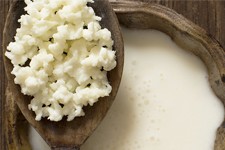
True or False: Antioxidants
Like every year, the arrival of the first warm, sunny days with their invitation to the outdoors reawaken interest in antioxidants, substances found in many foods which are able to counter those free radicals whose development could be helped by UV rays, along with many other factors, environmental or not.
Therefore, now is the right time to investigate this subject Here’s a list of myth and facts which will offer a better understanding on this subject:
1) Free radicals are always harmful
Myth.
Actually, it is a matter of balance: free radicals are useful but their excess is potentially harmful.
If free radicals do not form inside our body, we would be lacking in a potent weapon against pathogenic bacteria and other foreign agents.
However, an excessive amounts of free radicals can harm our cells. This is where the antioxidants show the importance of their action: to fight the excess of free radicals to re-establish the balance in our body.
2) Antioxidants are not all the same
Fact.
There are types of antioxidants which are very different from each other and, in many cases, they are active on as many different types of free radicals.
Actually, some vitamins such as C and E, some minerals, such as selenium and zinc, some enzymes and different kinds of molecules such as large families of polyphenols and carotenoids may have antioxidant properties.
3) To take antioxidants we need to eat red fruits and citrus
Both myth and fact.
Red fruits and citrus contain extremely interesting antioxidants, such as vitamin C and several flavonoids, from the polyphenols family.
However, they are not the only kinds of food that contain antioxidants: in fact we can find them in many fruits such as kiwi, persimmons, mangoes; vegetables like peppers, cabbage and broccoli, artichokes, garlic and onion; spices such as cocoa, tea and coffee.
Although more abundant in vegetable kingdom, antioxidants are not its exclusive prerogative: foods such as eggs, roe and – on special occasions – caviar offer great content of vitamin E, very important, for example, to prevent damage to our cellular membranes.
4) We can not prevent the formation of too many free radicals
Both myth and fact.
The factors responsible for the formation of free radicals are manifold: on some of them we can not have influence, but on others undoubtedly yes. In this case, it is mainly a matter of factors for which we have found a means of adequate protection, such as UV rays to be shielded with appropriate sunscreen, or factors depending on our lifestyle, starting from smoking.
But how to be sure to take the proper amount of antioxidants? In this regard, the Italian Society of Human Nutrition emphasizes the importance of the variety at the table: “a balanced diet, varied and rich in foods of vegetable origin is the best strategy to ensure an intake [of antioxidants] adequate in health terms” ( Ref. LARN 2014).


